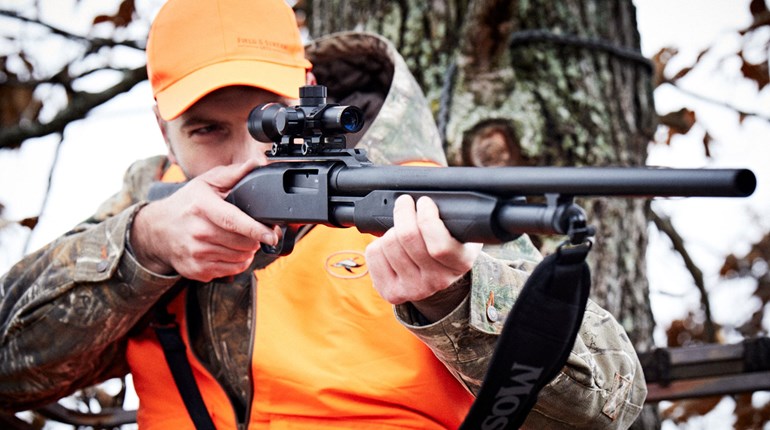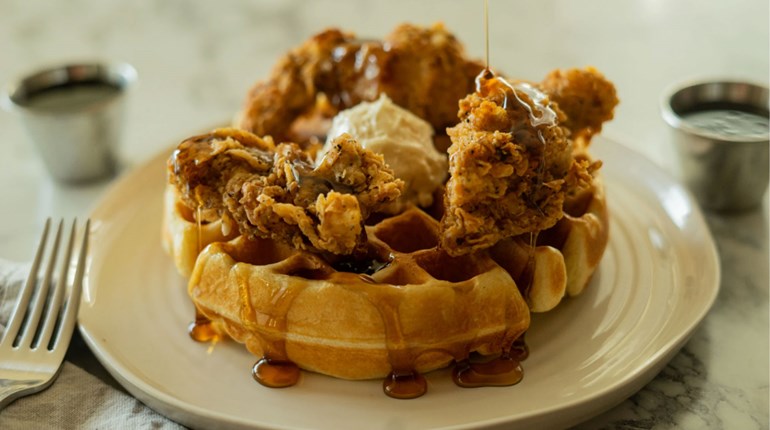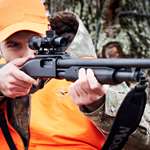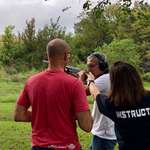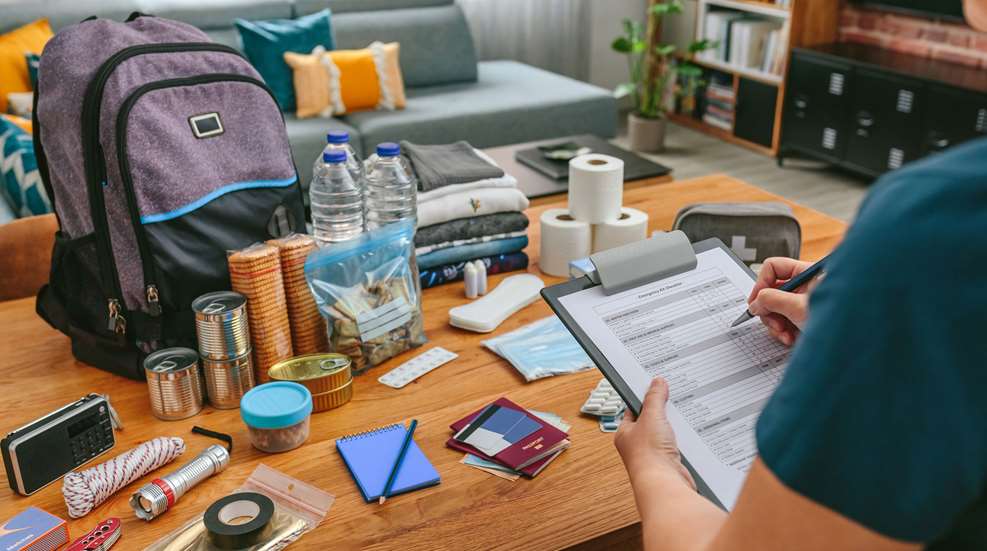
If you’re reading this, you’re likely the type of person who’s already put some thought into a home-defense plan that includes a firearm. While it’s great to be prepared for when something goes bump in the night, it’s also a smart idea to extend that preparation a little bit and stock some items in your home that will be helpful in a different kind of emergency. Whether that’s a hurricane, an extended power outage, a wildfire that requires you to evacuate, or some other kind of bug-in or bug-out scenario, having the right supplies can make all the difference.
You’ll have to take the advice here and filter it through your specific needs and what natural disasters are most common in your area. You’ll also have to consider your budget, your storage space and the way your home and property are set up. And, you might or might not want to consider some of the seemingly less-likely scenarios people prep for—a serious deadly pandemic, EMP that knocks out all electronics permanently, zombie apocalypse, etc.
Bugging Out
If you’re in the type of situation that requires you to leave home, it will be very helpful to have a grab-and-go bag for each member of the family. Depending on the situation, you might be able to take your vehicle, but be prepared in case you have to leave on foot. Generally, a person in average physical shape can carry a pack that weighs about 20 percent of their body weight—so if you weigh 150 pounds, don’t load up a backpack to more than about 30 pounds. Don’t buy cheap backpacks for this purpose, but you don’t have to go all-out and spend a fortune on high-end backpacker gear, either. Sturdy, comfortable, and preferably low-key (nothing that screams TACTICAL!) is what you’re looking for.
Ideally, you’ll have time to dress appropriately and strap on your firearm before you leave. So between you and your family, the bug-out bags should contain the following. You can add and customize based on your family’s needs and how much space/weight you have to work with.
- A first-aid kit including a couple of tourniquets, as well as some common OTC medications. If possible, some antibiotics are a great addition.
- A flashlight or headlamp for each family member.
- A radio, battery-operated or crank-operated. Consider storing it in a Faraday cage/bag so it is still operable after an EMP.
- Phone charger if electricity is still available.
- An emergency shelter and some type of warmth. Mylar blankets aren’t ideal, but they take up very little space, so it doesn’t hurt to carry one in each pack.
- Extra socks and a full set of dry base layers and underwear, minimum.
- Extra magazines and ammunition, plus gun oil and a small cleaning kit to keep things in working order.
- Ponchos or other rain gear.
- Fire-starting tools (at least one in every pack in case something gets lost or damaged).
- A lightweight backpacking stove and fuel.
- A water purification method—a LifeStraw-type device for each person and/or a water bottle per person with purification tablets. Some packets of electrolytes are a good idea, too, as they add quick energy and a blood sugar boost while taking up almost no weight.
- At least three days’ worth of calories per person. We’ll get into food in a separate section. And don’t forget about pets.
- Several bottles of water. I know, it’s heavy, but you don’t know when you’ll need it.
- A knife and a multi-tool. Take multiple knives, in fact, along with a small knife sharpener. Consider a saw or ax if you have room to carry it.
- A pot to boil water and cook food in.
- Zip ties and a small roll of duct tape.
- Paracord, which has many survival uses.
- Sewing kit.
- Emergency whistle, signal mirror and a compass and map of your area.
- Soap (liquid is less messy to carry) and basic hygiene items; consider toothbrushes, feminine hygiene products, diapers if you have a baby, a wash rag, toilet paper, and some garbage bags or zip-top bags to keep things dry.
- Pen and notepad, preferably the kind you can use in wet weather.
- Sunscreen, bug spray, lip balm and other related items.
Bugging In
If you’re in a situation that requires you to hunker down in your home, your bug-out bag already contains many helpful items—the first-aid kit, radio, etc. You have to assume you might not have electricity, heat or water in this scenario, so prepare for all of those. I recommend adding the following to your supplies:
- Additional water purification tablets.
- A fire extinguisher (which you should already own anyway).
- The tools and knowledge you’ll need to shut off any utilities, including gas and water, to your home in case it’s needed. This is especially important in earthquake-prone regions. Go ahead and learn how to do this now and discover what type of tool it requires.
- A cooking method that does not require electricity. If you have a charcoal or propane grill, this is handled. Keep a couple of extra tanks of propane or bags of charcoal on hand if you have room.
- Optional: A portable generator. In case of an extended power outage, even a relatively small generator can keep the food in the fridge and freezer from spoiling and run a couple of lights and a fan.
- Candles and extra batteries for the flashlights.
- Tarps, helpful for blocking off rooms (in case of quarantine or just to reduce the square footage you have to heat/cool) or temporarily patching holes in the roof due to bad weather.
- Chainsaw, if you live where trees blocking your driveway or falling on your house is a possibility.
- A method for handling household waste if the utilities are down and you can’t flush toilets. Whether it’s a latrine you dig outside, a bucket system or extra water stored for flushing toilets manually, you need a plan. And of course, plenty of TP.
- Extra prescription medications—try to stay a month or two ahead on your prescriptions so you always have at least a small stockpile.
- Plenty of batteries.
- Extra toiletries and cleaning supplies. Dish soap, body soap, shampoo, deodorant, toothpaste, vinegar, and regular unscented bleach, which can be used to purify water (eight drops of 6% bleach to a gallon of water).
- A HAM radio isn’t a bad idea (yes, they still have a cult following).
- Stored water—assume one gallon per person per day for drinking, cooking and sanitation. This can add up quickly, but if you have room, store at least enough for three days. The CDC recommends storing a two-week supply, which is 56 gallons of water for a four-person family. Don’t forget your water heater (if it’s not tankless) holds 40 or 50 gallons you can use in a pinch.
There’s much more we could add to this list, but it’s time to move on to the final topic: Food.
Prepping Food
For bugging out, I like to keep it simple. I have stocked my family’s go-bags with emergency food ration bars. They’re extremely calorie-dense, so while they look like they’ll probably taste disgusting, they take up very little space in our bags and will get us through for a week if necessary. Plus, with a 20-year shelf life, they’re a set-it-and-forget-it option. You can certainly stock your family’s bags with granola bars and other dry goods, but you’ll have to remember to swap them out every six months or so. Backpacking food in the vein of MREs is also an option, although not a cheap one.
When it comes to bugging in, I’m of the opinion that every household should have at least three weeks worth of food at all times. You might already have that in your pantry and freezer. If you want to bulk up and have the space to do it (six months or more is my preference, not including what’s in the freezer, as most of that might be lost), you have two primary options:
- Extra canned and dry goods, rotated regularly. Soups, fruits, vegetables, and canned proteins—just add a few extra cans of whatever you’re buying that week to your grocery list, and keep stocking up until you have six months worth of food in the pantry. This method is a more affordable way of building up a six-month food supply, but it requires frequent monitoring and rotating so you’re using things up before they expire and replacing them with new items. This method also has the advantage of zero waste, and you know it’s stuff your family likes to eat.
- Long-term freeze-dried foods. If you don’t want to deal with monitoring and rotating a huge pantry stock, you can invest in freeze-dried goods with an extremely long shelf life of up to 30 years. Most of these are sold in large, sealed plastic tubs or No. 10 cans, and almost any food you can think of comes this way. Start with the basic rice and beans to build an immediate stockpile, then add to it as you can afford to with freeze-dried fruits and vegetables, soups, milk, egg powder, powdered butter and peanut butter, oatmeal, pasta and the like. This is a more expensive way to go, but once the stockpile is built, you can forget about it for 20 or 30 years. Make sure you have a cool, dry place to store the food, and be sure you can open the cans (some require a special tool).













